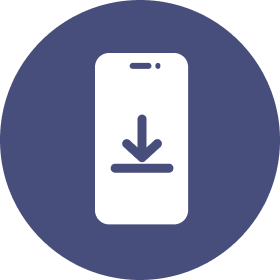4 things employees need to know before investing in Provident Fund

What Is a Provident Fund?
“Provident Fund” is a fund set up voluntarily by the employer and employee (member of the fund) to help employees save up for their retirement. The source of money invested in the fund by the employer each month is called “employer’s contribution.” And the amount of money deducted from employee’s monthly salary is called “employee’s contribution.”
Provident fund investment must be under the regulations of the Securities and Exchange Commission (SEC). The “Provident Fund Act” allows employees to contribute to the fund between 2% to 15% of their monthly salary. On the other hand, the contribution terms will be set by the employer depending on each company’s policy.
1. The employer’s contribution portions, and the terms of contribution are worth knowing
The “Provident Fund Act” allows the employer to determine employee’s contributions rate into the fund between 2% to 15% deducted from employee’s monthly salary. Thus, the employer’s contribution will depend on the fund scheme set by the employer. Normally, the employer’s portion of contribution is no less than the amount of the employee’s contributions which means the more employee contributes, the more employer contributes. The employer may decide to increase the contribution rate gradually according to how long the employee stays with the company. Thus, employees should study the term of contributions carefully. In addition, when employees terminate the fund, it does not mean that they will always receive all the money that the employer has contributed. For example, if employee terminates the fund without resigning, the employer may determine that no contributions will be made. Or the longer the employee works for the company, the larger contributions the employee may receive gradually over time.
2. Choose investment plan wisely and suitably for employee’s needs
One of the most important factors besides deciding how much of the monthly salary will be deducted and contributed to the provident fund each month, is the fund’s growth and return which depends on the investment policy. Most employees do not know which investment plan is suitable for them. Choosing the investment plan by considering each employee’s objective and risk tolerance are well recommended. For example, most provident fund members invest in very conservative investment plan that does not match their risk appetite and expectation which unable to create enough wealth for expenses after retirement.
Principal Asset Management utterly understands the need of fund members. Thus, Principal Asset Management wishes to propose “Principal Target Date Fund” which designed to provide appropriate investment plan for employees.
“Principal Target Date Fund” is designed to adjust member’s portfolio automatically each year and suitable for the fund members who do not select a plan by his/herself. The portfolio will be managed closely by fund manager. The portfolio’s asset allocation and risk will be adjusted to suit the member’s age as the fund will decrease the portion of risky assets investment e.g. stocks and switch to invest more in fixed income. This will help fund members to have an appropriate level of investment risk throughout their investment life and emphasizes asset diversification. Thus, the fund can generate returns as well as reduce investment risk in portfolio.
3. The total amount of employee's contribution to the fund is tax deductible up to 500,000 THB per year (Including SSF and RMF)
The employee (Fund member) should keep in mind that the amount of contributions to the provident fund can be used as tax deductible. According to the Revenue Department, the employee can reduce the actual amount of their contribution to the fund as tax deductible up to 500,000 THB per year when including “Pension life insurance, Retirement Fund (RMF) and Savings Fund (SSF) must not exceed 500,000 baht.”
4. Make sure you manage your provident fund properly when leaving the company
It is common for the employee to leave the company to seek opportunities and challenges in other workplace before retirement. However, many people improperly manage their provident fund when leaving the company which have negative consequences. Generally, if the member leaves the company they can manage their provident fund in 4 ways:
1. You can choose not to withdraw the money and continue to be the member of the fund
2. Transfer to the provident fund of the new company
3. Transfer to invest in a Retirement Mutual Fund (RMF for PVD)
4. Withdraw the money and invest on your own
For more information please contact
Principal Asset Management Co., Ltd
Website: https://www.principal.th/
Tel 02 686 9500 press 2
Disclaimer: The investors should study and understand the product (fund) feature, return condition and risk factors carefully before making an investment. Past performance is not a guarantee of future results. Plan WISE Retire WELL is an investment model calculator tool to study the possibility of performance only. It is not a guarantee of future returns.


